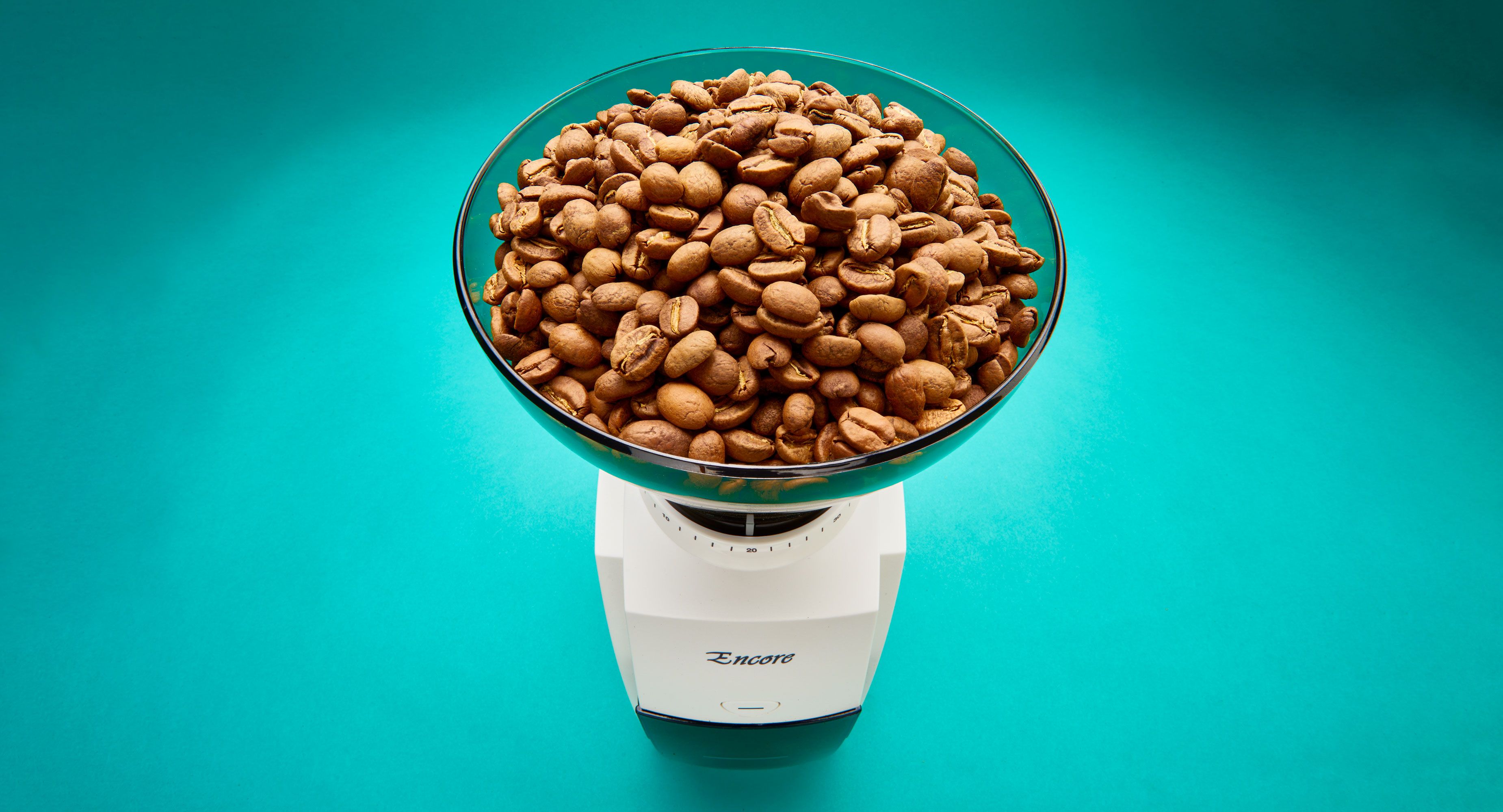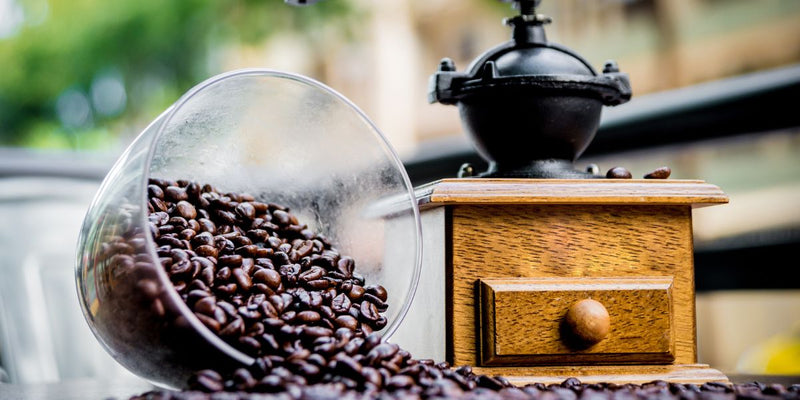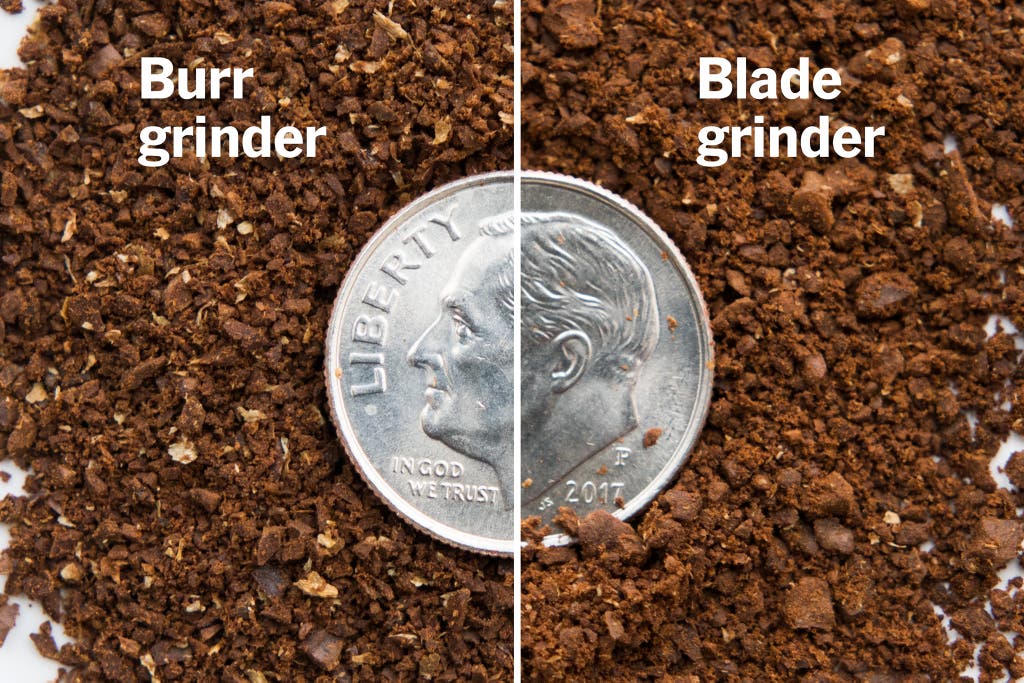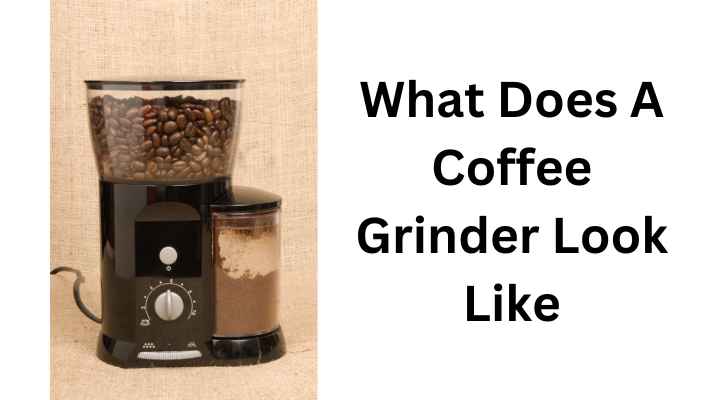When shopping for a coffee grinder, look for consistency in grind size and adjustable grind settings. A good coffee grinder will provide uniform grounds and allow you to control the fineness or coarseness of the grind to suit your brewing preferences.
Having a grinder that meets these criteria is essential for achieving the best flavor extraction and ensuring a well-balanced cup of coffee. But why does it matter? The quality of your coffee grinder can greatly impact the taste and aroma of your brew.
We will explore the key features to consider when selecting a coffee grinder that meets your needs. Whether you are a coffee connoisseur or simply enjoy a good cup of joe, finding the right coffee grinder is crucial for enhancing your coffee experience.
Key Factors To Consider
When it comes to brewing a delicious cup of coffee at home, having the right equipment is essential. One such equipment that plays a crucial role in the coffee making process is the coffee grinder. A good coffee grinder can significantly enhance the flavor and aroma of your coffee. However, with so many options available in the market, choosing the right coffee grinder can be overwhelming. To help you make an informed decision, let’s explore some key factors that you should consider when buying a coffee grinder.
Burr Vs Blade Grinders
One of the first decisions you need to make when choosing a coffee grinder is whether to go for a burr grinder or a blade grinder. Each type has its own advantages and disadvantages.
Blade grinders are the more affordable option and use blades to chop the coffee beans. They are generally compact and easy to use. However, they tend to produce inconsistent coffee grounds, which can affect the flavor and brewing process. On the other hand, burr grinders use two abrasive surfaces, called burrs, to crush the coffee beans into consistent particles. They offer more control over the grind size and produce uniform grounds, leading to a balanced and flavorful cup of coffee.
Grinding Consistency
When it comes to coffee grinders, grinding consistency is paramount. Consistent grinding ensures that each coffee particle is of the same size, which promotes an even extraction during brewing. Whether you are brewing espresso, pour-over, or French press coffee, having uniform grounds is essential for achieving the desired taste. Look for a coffee grinder that is known for delivering consistent results across various grind sizes.
Adjustable Grind Size
Every coffee brewing method requires a specific grind size to achieve optimal flavor extraction. Whether you prefer a coarse grind for French press or a fine grind for espresso, it’s important to have a coffee grinder with adjustable grind size settings. This feature allows you to customize the grind size according to your brewing method and personal preferences. Look for a grinder that offers a wide range of grind size options for versatility.
Motor Power
The motor power of a coffee grinder is another crucial factor to consider. A powerful motor ensures that the grinder can handle the load and grind coffee beans efficiently. A weak motor may struggle with grinding tougher beans or large quantities, resulting in uneven grounds or overheating. Look for a coffee grinder with a motor power that matches your grinding needs.
Bean Hopper Capacity
The bean hopper is where you store the coffee beans before grinding. The size of the hopper determines how many beans you can grind at once. If you often brew coffee for a large group or like to stock up on beans, a coffee grinder with a larger bean hopper capacity will be more suitable. However, if you prefer to grind beans in smaller batches or have limited counter space, a grinder with a smaller hopper may be a better choice.
Considering these key factors when choosing a coffee grinder will help ensure that you invest in a grinder that meets your specific brewing needs and delivers a satisfying coffee experience every time.

Credit: nymag.com
Burr Vs Blade Grinders: Which Is Right For You?
When searching for the perfect coffee grinder, one of the key decisions you’ll need to make is whether to go with a burr grinder or a blade grinder. Both options have their advantages and disadvantages, so it’s important to understand the differences and consider your personal preferences before making a choice. In this guide, we’ll walk you through the pros and cons of burr grinders and blade grinders, and highlight the factors you should consider when deciding between the two.
The Pros And Cons Of Burr Grinders
A burr grinder is known for its ability to produce consistent grind sizes, making it a favorite for coffee enthusiasts who seek precision. Here are the pros and cons:
| Pros | Cons |
|---|---|
|
|
The Pros And Cons Of Blade Grinders
On the other hand, blade grinders are simple and affordable, making them a popular choice for casual coffee drinkers. Let’s explore their pros and cons:
| Pros | Cons |
|---|---|
|
|
Factors To Consider When Choosing Between The Two
Now that you’re aware of the pros and cons of burr grinders and blade grinders, it’s essential to consider these factors when deciding:
- Quality requirements: If you’re a coffee connoisseur seeking perfection in every cup, a burr grinder may be the better choice as it offers greater control and consistency.
- Budget: If you’re on a tight budget or simply looking for a basic grinder for occasional use, a blade grinder can provide a cost-effective solution without compromising on the taste too much.
- Brewing method: Different brewing methods require specific grind sizes. If you frequently switch between brewing methods, a burr grinder’s versatility in grind adjustment may be worth the investment.
- Time and convenience: Blade grinders are known for their speed and ease of use, making them a convenient choice for those who prioritize efficiency.
Ultimately, the decision between a burr grinder and a blade grinder comes down to your personal preferences, brewing habits, and budget considerations. Both types can deliver a flavorful cup of coffee, but burr grinders are generally favored by coffee enthusiasts who prioritize precision and consistency.
Grinding Consistency: Why It Matters
Grinding consistency is crucial when choosing a coffee grinder. Look for one that delivers even and uniform grinding for a better tasting cup of coffee.
Why Consistent Grind Size Is Important
The consistency of the grind size is a crucial factor to consider when choosing a coffee grinder. Grinding consistency refers to the uniformity of the coffee particles produced by the grinder. When the grind size is consistent, each coffee particle has a similar size, which allows for optimal extraction of flavors during brewing.
A consistent grind size ensures that the water extracts the desired flavors evenly from the coffee grounds. This uniform extraction leads to a well-balanced cup of coffee with a smooth and rich flavor profile. On the other hand, an inconsistent grind size can result in uneven extraction, causing some coffee particles to be under-extracted and others to be over-extracted.
How Inconsistent Grind Affects Coffee Taste
An inconsistent grind size can have a significant impact on the taste of your coffee. When there are variations in particle size, the smaller particles tend to over-extract, resulting in bitterness, while the larger particles may under-extract, leading to a weaker and sour taste. This inconsistency in extraction makes it challenging to achieve the desired flavor profile of your coffee.
Moreover, an inconsistent grind size can also affect the brewing process itself. If you are using a brewing method that relies on precise extraction times, such as pour-over or espresso, variations in grind size can make it difficult to control the brew time accurately. This can further result in a subpar cup of coffee.
Evaluating The Grind Consistency Of Different Grinders
When comparing different coffee grinders, it’s essential to evaluate their grind consistency to ensure you choose the one that will deliver optimum brewing results. Here are a few ways to assess grind consistency:
- Visual Inspection: Examine the coffee grounds produced by the grinder. Ideally, the particles should be uniform in size, with a consistent shape and texture.
- Sieve Analysis: A sieve analysis involves passing the coffee grounds through different-sized sieves to separate them by particle size. This method provides a quantitative measurement of the grind size distribution.
- Tactile Assessment: Feel the coffee grounds between your fingers to check for any coarse or fine particles. A consistent grind should feel smooth and even.
Remember, consistent grind size plays a crucial role in the overall quality of your coffee. Investing in a grinder that offers excellent grind consistency will undoubtedly enhance your coffee brewing experience and allow you to enjoy the true flavors of your beans.
Adjustable Grind Size: Finding The Perfect Grind
Finding the perfect grind for your coffee is crucial, and an adjustable grind size is key. Look for a coffee grinder that allows you to easily adjust the grind size to achieve your desired flavor and strength.
The Importance Of Adjustable Grind Size
When it comes to brewing a delicious cup of coffee, one of the key factors to consider is the grind size. The grind size directly affects the flavor and quality of your coffee, making it a crucial element in the brewing process. This is where an adjustable grind size feature in a coffee grinder becomes indispensable.
Having the ability to adjust the grind size allows you to fine-tune your brewing process to suit your preferences and the specific coffee beans you are using. Whether you prefer a coarse grind for a French press or a fine grind for an espresso machine, the adjustable grind size feature gives you the freedom to experiment and achieve the perfect cup every time.
But why is the grind size so important? Let’s delve deeper into how different brew methods require different grind sizes.
Different Brew Methods And Their Ideal Grind Sizes
Not all brew methods require the same grind size. Each brewing method has its own ideal grind size to extract the best flavors from your coffee beans. Here are some popular brew methods and their corresponding grind sizes:
| Brew Method | Ideal Grind Size |
|---|---|
| French Press | Coarse |
| Pour Over | Medium to Medium-Fine |
| Espresso | Fine |
| Aeropress | Fine to Medium-Fine |
Understanding the ideal grind size for your preferred brewing method ensures that you extract the optimal flavors and aromas from your coffee grounds. It helps you achieve the desired balance between strength and extraction.
How To Determine The Grind Size You Need
Determining the ideal grind size for your brewing method can seem daunting at first, but with a few simple guidelines, you’ll be on your way to finding the perfect grind:
- Consider the brewing method: Refer to the table above to identify the recommended grind size for your preferred brewing method.
- Experimentation is key: Start with the recommended grind size and then gradually adjust the setting based on your personal taste preferences. Pay attention to the flavor and strength of your coffee.
- Take notes: Keep a record of the grind sizes and the corresponding results you achieve. This will help you remember the settings that worked best for each brewing method and different coffee beans.
- Refine as you go: Remember that finding the perfect grind size is a continuous process. As you gain more experience and explore different coffees, don’t be afraid to refine your grind size to discover new flavors and enhance your brewing skills.
By following these simple steps, you’ll be well on your way to mastering the art of finding the perfect grind size for your coffee preparation.
Motor Power: Grinding Efficiency And Speed
The motor power of a coffee grinder greatly impacts its grinding efficiency and speed. When choosing a coffee grinder, look for a strong motor that can provide fast and consistent grinding results.
The motor power of a coffee grinder plays a crucial role in determining its grinding efficiency and speed. A powerful motor ensures that the grinding process is quick and efficient, resulting in a consistent grind size. However, finding the right balance between power and noise is equally important. This article will delve into the impact of motor power on grinding performance, how to evaluate the motor power of different grinders, and tips for ensuring an optimal balance between power and noise in your coffee grinder selection.
Understanding The Impact Of Motor Power On Grinding Performance
The motor power of a coffee grinder directly affects its grinding performance. A higher motor power generally translates to faster and more efficient grinding. With greater power, the grinder’s blades can rotate at higher speeds, effortlessly crushing the coffee beans into a finer grind. This ensures a more consistent extraction and better flavor in your cup of coffee. However, it’s important to note that excessive motor power can also generate more heat, potentially affecting the flavor and quality of the ground coffee.
Evaluating The Motor Power Of Different Grinders
When choosing a coffee grinder, it’s essential to evaluate the motor power to ensure optimal grinding performance. Most grinders specify their motor power in watts (W). Look for models with a higher wattage rating, as they indicate a more powerful motor. Consider your brewing needs and the desired grind size. For example, if you primarily brew espresso, a grinder with a motor power of at least 1500W will provide the speed and consistency required for a fine grind. For coarser grinds, such as those needed for French press or cold brew, a motor power of 1000W or above should suffice. Remember that a higher motor power may lead to a noisier operation, so keep this in mind if noise levels are a concern.
Finding The Right Balance Between Power And Noise
While a powerful motor is desirable, it’s essential to find the right balance between power and noise in your chosen coffee grinder. Higher motor power often correlates with increased noise levels. If noise is a significant factor for you, consider opting for a grinder with a noise reduction mechanism or a lower motor power. It’s important to strike the right balance that ensures efficient grinding without sacrificing a peaceful coffee preparation experience.
In conclusion, motor power significantly impacts the grinding efficiency and speed of a coffee grinder. When evaluating different grinders, carefully consider the motor power in relation to your brewing needs and desired grind size. Find a balance between power and noise that suits your preferences, ensuring an enjoyable coffee grinding experience.
Bean Hopper Capacity: Considerations For Convenience
The bean hopper capacity of a coffee grinder is an essential factor to consider for convenience. With a larger capacity, you can grind more beans at once, saving time and effort in your coffee-making routine. Choose a grinder that offers a generous hopper capacity to ensure a seamless grinding experience.
The Benefits Of Larger Bean Hopper Capacity
Having a coffee grinder with a larger bean hopper capacity can be extremely beneficial for coffee enthusiasts and those who require a constant supply of freshly ground coffee. The main advantage of a larger hopper capacity is convenience. With a bigger hopper, you can grind a larger quantity of coffee beans at once, reducing the need for frequent refills. This is especially advantageous for busy mornings or when entertaining guests, as it allows you to quickly and efficiently grind coffee without interruption. Additionally, a larger hopper capacity saves you time and effort as you don’t have to constantly measure and refill the grinder. It provides a hassle-free experience, ensuring you always have a ready-to-use batch of coffee grounds whenever you need them.
Factors To Consider When Determining The Ideal Capacity For Your Needs
Determining the ideal bean hopper capacity for your needs requires considering a few key factors. These factors will help you strike a balance between convenience and freshness, ensuring you make the most out of your coffee grinder. Here are a few important considerations:
- Usage Frequency: Think about how often you use your coffee grinder. If you’re an occasional coffee drinker, a smaller hopper may suffice. However, if you’re a daily coffee enthusiast or have a large household, a larger hopper capacity will better suit your needs.
- Brewing Method: Different brewing methods require different amounts of coffee grounds. For example, espresso shots typically require a larger quantity of finely ground coffee, while a French press needs a coarser grind with higher volume. Consider the brewing methods you use most frequently to determine the appropriate hopper size.
- Storage Space: Take into account the available storage space in your kitchen. Ensure that the coffee grinder, with its larger hopper capacity, can fit comfortably in your designated area without crowding your countertop or cabinets.
- Bean Freshness: It’s also important to remember that coffee beans start to lose their freshness once they are ground. If you prefer the freshest cup of coffee possible, it might be better to opt for a grinder with a smaller hopper capacity to reduce the time the coffee beans spend in the hopper.
Finding the perfect bean hopper capacity for your coffee grinding needs involves finding a balance between convenience and freshness. Consider these factors and choose a size that best matches your usage frequency, brewing method, available space, and desire for optimal bean freshness. By doing so, you’ll ensure a seamless and enjoyable coffee grinding experience every time.
Frequently Asked Questions For What To Look For In A Coffee Grinder
What Features Should I Look For In A Coffee Grinder?
Look for a coffee grinder with adjustable grind settings, durable stainless steel blades, a large hopper capacity, easy-to-clean design, and consistent grind size for a perfect cup of coffee.
What Type Of Coffee Grinder Should I Get?
To choose a coffee grinder, consider factors like your budget, preferred coffee brewing method, and desired grind consistency. Blade grinders are affordable but offer less control, while burr grinders provide more precise and consistent grinds. Choose the type that best suits your needs.
Does Wattage Matter For Coffee Grinder?
Yes, wattage matters for a coffee grinder. Higher wattage means more power, resulting in faster and more consistent grinding. It ensures an efficient and effective grind for better coffee extraction.
What Difference Does A Good Coffee Grinder Make?
A good coffee grinder makes a big difference as it ensures even grinding, which leads to consistent flavor extraction. It helps to unlock all the flavors and aromas locked in the coffee beans, resulting in a more flavorful and rich-tasting cup of coffee.
Conclusion
Choosing the right coffee grinder is crucial for achieving the perfect cup of coffee. By considering factors such as grind consistency, build quality, and ease of use, you can ensure that your coffee grinder meets your specific needs and preferences.
Remember, investing in a high-quality coffee grinder is an investment in the quality of your coffee brewing experience. So, take your time, do your research, and find a coffee grinder that delivers the perfect grind every time. Happy brewing!






